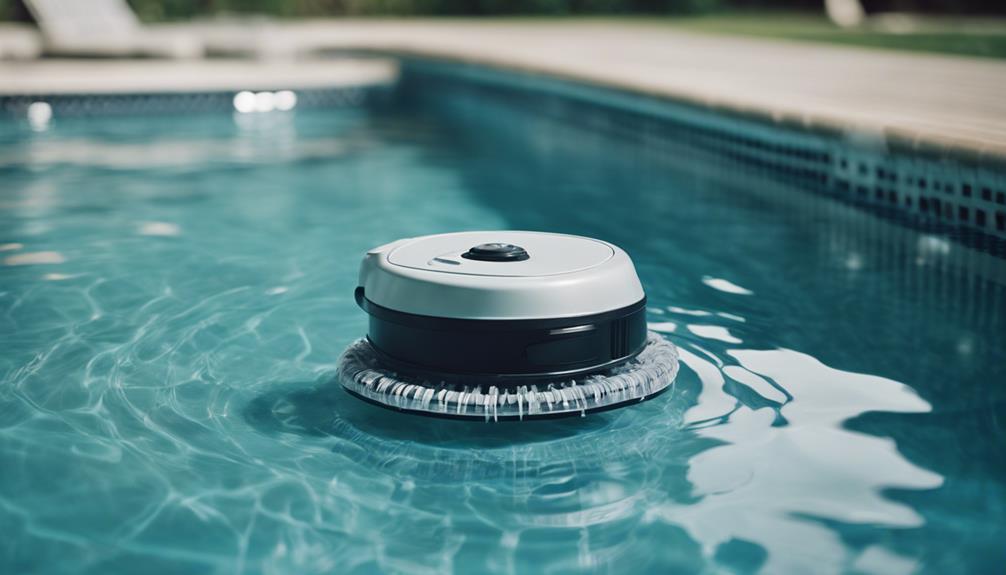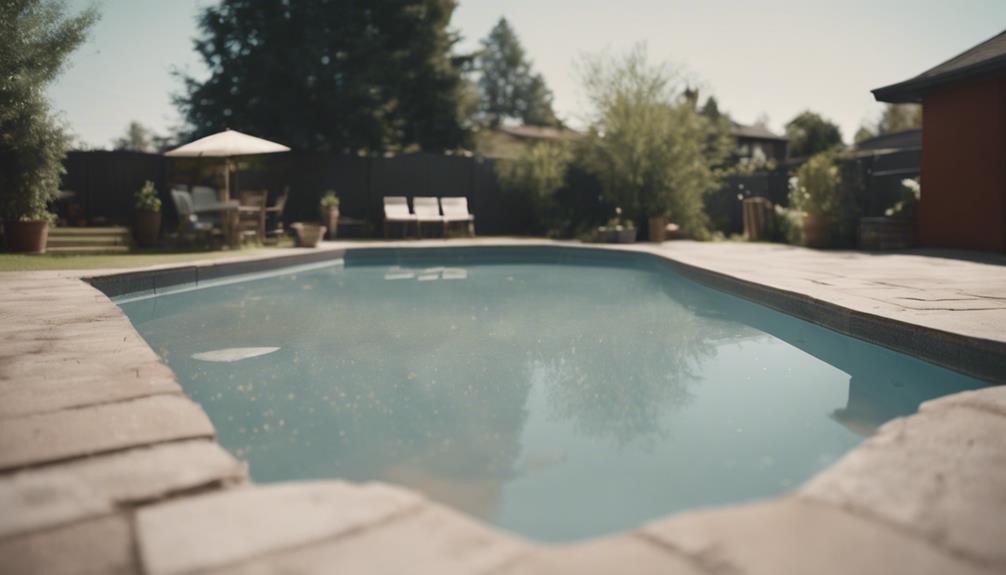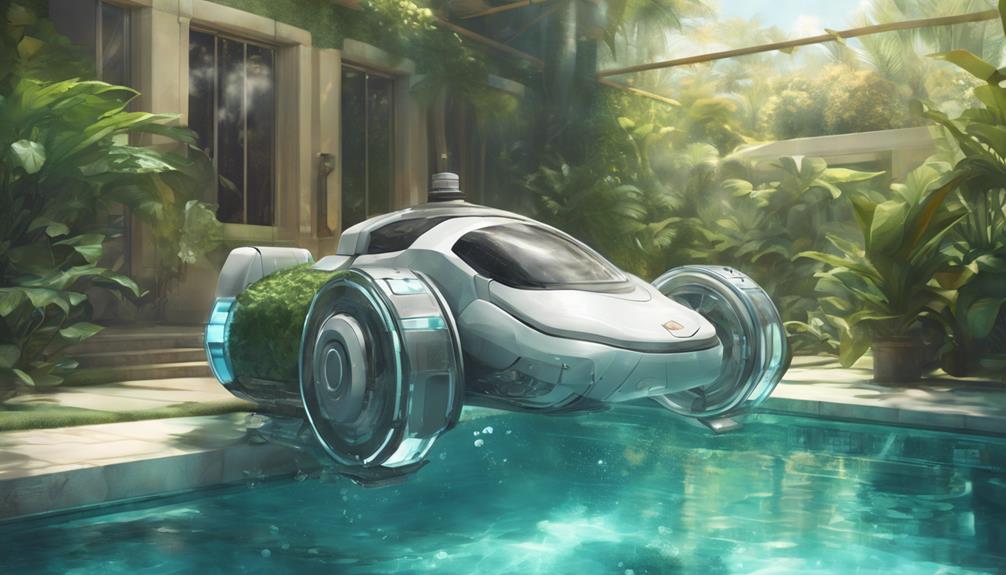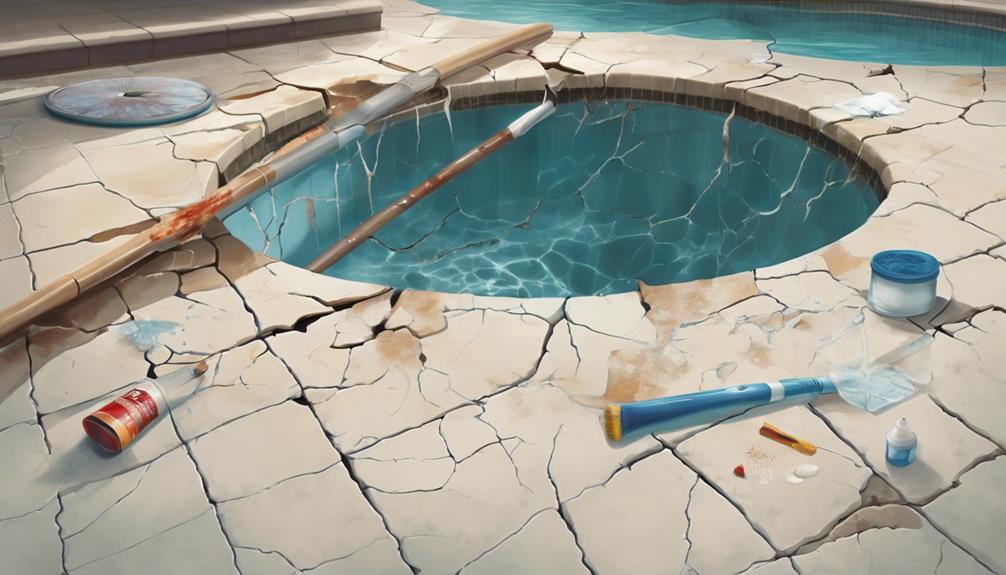For a successful swimming pool removal, hire professional contractors to ensure safe handling and environmentally friendly disposal. Important steps include checking for underground utilities, preparing for post-removal landscaping, and implementing safety measures. Break down the pool by cutting the liner, removing panels and metal rims, and draining it completely before disassembling. Recycling metal parts, properly disposing of chemicals, and reusing components are crucial for eco-friendly practices. Transform the pool area by repurposing it for outdoor features such as a garden, seating area, fire pit, or pond. Create a soothing oasis after the removal process.
Key Takeaways
- Hire a professional for safe removal and eco-friendly disposal.
- Assess underground utilities before starting removal process.
- Prepare for post-removal landscaping to reclaim the pool area.
- Prioritize safety measures during dismantling and disposal.
- Repurpose the pool area into new outdoor features like a garden or seating area.
Preparation for Pool Removal
Prepare for your swimming pool removal by hiring a professional contractor to guarantee safe and expert handling of the process. A professional contractor will make sure that the pool removal is done efficiently, minimizing any potential risks or damages.
When considering the environmental impact, opt for eco-friendly disposal methods to reduce harm to the ecosystem. Before starting the removal process, it's important to assess the site for any underground utilities to avoid any accidents or damage to existing infrastructure.
After the pool removal, prepare the area for post-removal landscaping to enhance the aesthetic appeal of your property. Safety measures should be a top priority during the removal process to protect your property and ensure the well-being of everyone involved.
Tools and Equipment Required

Gather the essential tools and equipment needed for dismantling and removing the swimming pool. Heavy-duty metal cutters are vital for cutting through the pool walls, while a cordless drill with screwdriver attachments is necessary to remove screws and fasteners holding the pool structure together.
To efficiently drain the pool water, use a sump pump along with a garden hose. For organizing and storing the dismantled pool parts, have rope, bungee cords, and large boxes on hand.
Additionally, make sure to have Phillips head and straight-edge screw bits available for disassembling the metal pool components effectively. By having these tools ready, you can streamline the pool removal process and make sure that each step, from dismantling to disassembling, is carried out smoothly and efficiently.
Proper tools and equipment are essential for a successful pool removal project, making the task more manageable and less challenging.
Dismantling the Pool Structure

When dismantling the pool structure, start by cutting the worn-out pool liner and removing the top connecting panels. Utilize heavy-duty metal cutters to carefully cut through the liner and cordless drills or screwdrivers to unscrew wall sections.
Disassemble the metal rims by removing the screws and storing the pieces in large boxes for safekeeping. Before commencing the dismantling process, make sure the pool is drained completely using a sump pump and a garden hose to prevent any water-related issues.
Once the pool is empty, proceed with removing the various components systematically. Roll up and tie the disassembled sections with rope or bungee cords to make them easier to handle and dispose of later. By following these steps and using the appropriate tools, you can effectively remove your pool piece by piece, preparing it for disposal or repurposing.
Disposal Options for Pool Materials

When considering disposal options for pool materials, proper handling and recycling can greatly reduce environmental impact and promote sustainability. Here are some key points to help you make eco-friendly choices when removing your pool:
- Recycling Metal Parts: Recycling metal components of the pool, such as steel panels or aluminum frames, can help minimize waste and reduce the need for raw materials.
- Proper Disposal of Pool Chemicals: Ensuring the correct disposal of pool chemicals, like chlorine or pH adjusters, is essential to prevent water contamination and harm to the ecosystem.
- Reusing Pool Components: Consider reusing pool equipment or donating usable parts to others in need. This not only reduces waste but also benefits those looking for affordable pool materials.
Reclaiming the Pool Area

Consider repurposing the pool area to create a new outdoor feature that adds both value and functionality to your property. By removing the pool, you can transform the space into a versatile outdoor living area. Think about incorporating elements like a garden, seating area, or even a focal point like a sunken fire pit or pond. This reimagined space can serve as a relaxing oasis for entertainment and leisure.
Utilizing the former pool area for a garden can bring greenery and tranquility to your outdoor space.
Alternatively, creating a patio or deck can provide a practical and inviting seating area for gatherings. Adding unique features like a sunken fire pit can make the space a cozy and intimate spot for evenings outdoors.
With some creativity and planning, reclaiming the pool area can turn it into a functional and attractive part of your property. Whether you opt for a garden retreat, a stylish seating area, or a captivating focal point, repurposing the pool space offers endless possibilities for enhancing your outdoor living experience.
Eco-Friendly Pool Removal Practices

When removing your swimming pool, consider sustainable practices like recycling metal parts to reduce environmental impact and promote sustainability.
Proper disposal of pool chemicals is essential to prevent pollution and harm to the ecosystem.
Reusing pool components or donating them can minimize waste and support eco-friendly practices.
Sustainable Pool Disposal
Recycling the metal parts of your swimming pool can greatly reduce the environmental impact of its removal process. When considering sustainable pool disposal, here are some eco-friendly practices to keep in mind:
- Prevent Landfill Waste:
Recycling metal components like pool frames and supports can help prevent them from ending up in landfills, reducing environmental harm.
- Avoid Water and Soil Pollution:
Properly disposing of pool chemicals is essential during removal to prevent contamination of water sources and soil.
- Reduce Waste:
Reusing pool components or donating them to others can markedly cut down on the waste generated from pool removal.
Environmentally Safe Removal
Reducing the environmental impact of pool removal involves implementing eco-friendly practices such as recycling metal components and properly disposing of pool chemicals. Recycling metal parts of the pool during removal promotes sustainability by reducing waste and energy consumption.
Proper disposal of pool chemicals is vital for preventing water and soil pollution, guaranteeing a safe and eco-friendly removal process. Reusing pool components or donating them can further minimize waste and support environmentally conscious practices.
Consulting local regulations for guidelines on eco-friendly pool dismantling and disposal is essential to ensure compliance with environmental standards. Considering eco-friendly alternatives for pool maintenance and removal can greatly reduce the ecological footprint of the removal process, contributing to a more sustainable outcome.
Frequently Asked Questions
What to Do With an Inground Pool You Don't Want?
If you have an inground pool you don't want, consider converting it into a deck, garden, sunken fire pit, pond, or simply removing it for more backyard space. Each option offers unique possibilities for your outdoor area.
How to Landscape After Removing a Pool?
When you landscape after removing a pool, envision a new oasis. Plant native greens, create cozy nooks, and use permeable pavers. Design a backyard that's both functional and eco-friendly. Add rainwater harvesting and fragrant blooms for a sensory retreat.
How to Permanently Cover a Pool?
To permanently cover a pool, consider building a deck over it. This can create additional outdoor living space, add value to your home, and provide a great spot for entertaining. You can hire a professional or DIY for customization.
Can I Cover a Pool With No Water in It?
You can cover a pool with no water in it by transforming it into a deck, creating a sunken fire pit, converting it into a garden, building a pond, or installing a patio. Make your outdoor space shine!
What Are Some Effective Ways to Remove a Swimming Pool?
When considering options for removing swimming pool, hiring a professional demolition team is an efficient choice. They can safely and quickly break down the pool, remove debris, and refill the area. Another option is a partial pool removal, where the top portion is removed and filled with gravel and soil.
What are Effective Ways to Remove a Swimming Pool?
Looking for the best get rid of swimming pool options? You can consider partial or full demolition, backfilling, or repurposing the area into a garden or patio. Another option is to hire a professional pool removal service to ensure the job is done safely and efficiently.
Conclusion
To sum up, removing a swimming pool can be a challenging task, but with the right tools and preparation, it can be done effectively.
For example, a family in California successfully reclaimed their backyard space by removing their old pool and creating a beautiful garden in its place.
By following the proper steps and considering eco-friendly practices, you can say goodbye to your pool and hello to a new outdoor oasis.










